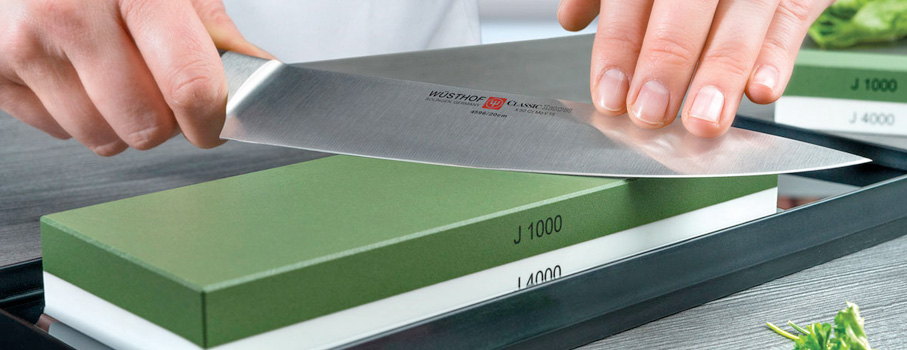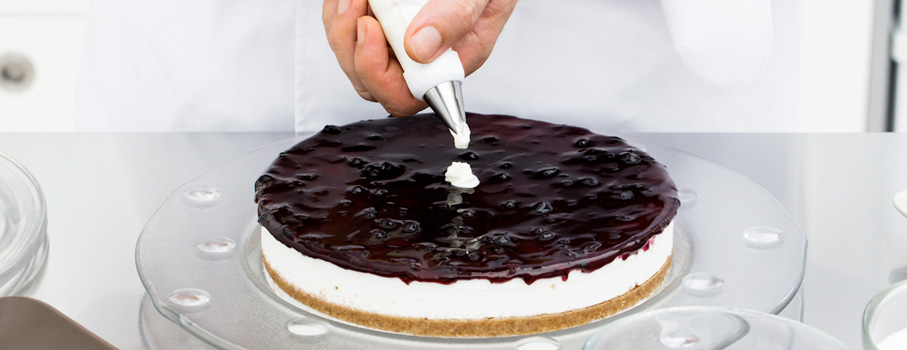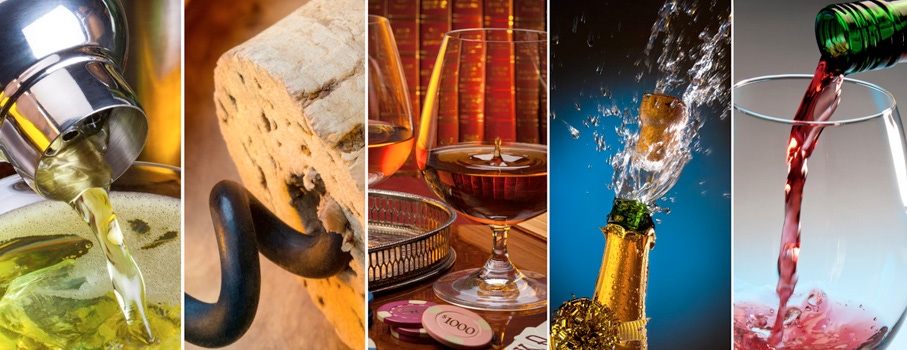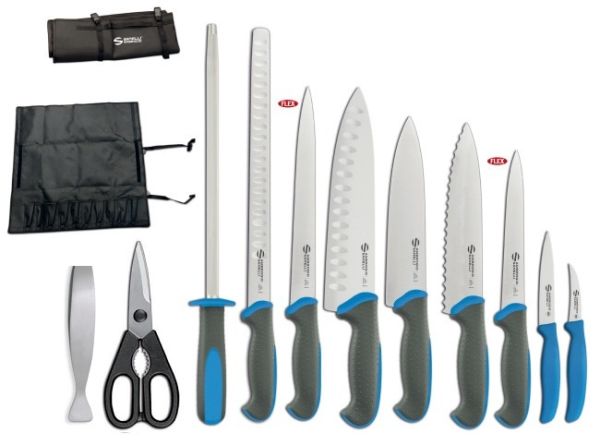Language
WORLDWIDE SHIPPING
Sea Kitchen roll-up complete with 8 knives and 3 accessories by Ambrogio Sanelli
€289.00
€236.89
Availability:
In stock
A professional knife roll for the chef who is passionate about seafood and wants to use high-quality blades specifically designed for cutting and preparing fish.
The handles on Ambrogio Sanelli's Tecna Colore knives are double moulded.
The blades are made of NITRO-B, a unique nitrogen steel (1.4916).
The handle is made up of a non-deformable PP internal core that is securely attached to the steel tang, as well as a softer external SEBS covering.
To the touch, the two materials blend together seamlessly to form a single body. The outermost section, which is grey in hue, features micro-spheres that improve ergonomics by decreasing slipperiness and encouraging comfort.
All of the materials used to make these knives are non-toxic, sterilizable, dishwasher safe, resistant to high and low temperatures, and in compliance with current hygiene and food safety regulations.
The Cucina di Mare roller knife holder contains the following 8 knives and 3 accessories:
n. 1 Curved paring knife blade cm. 7 Supra series - Blue handle - S691007L
n. 1 Straight paring knife blade cm. 11 Supra series - Blue handle - S682011L
n. 1 Flexible filleting knife blade cm. 18 - Blue handle Tecna Color Series - T351018L
n. 1 Flexible filleting knife blade cm. 25 - Blue handle Tecna Color Series - T351025L
n. 1 Serrated carving knife blade cm. 20 - Blue handle Tecna Color Series - T346020L
n. 1 Carving knife blade cm. 20 - Blue handle Tecna Color Series - T349020L
n. 1 Hollow-ground carving knife blade cm. 24 - Blue handle Tecna Color Series - T347024L
n. 1 hollow-ground salmon knife blade cm. 32 - Blue handle Tecna Color Series - T356032L
n. 1 Round sharpener cm. 30 - Blue handle Tecna Color Series - T018030L
n. 1 Toothed stainless steel fish scissors cm. 20 - 1555000
n. 1 Fishbone tweezers - 1160.000
When fully extended, the washable (nylon) roll-up knife holder measures 74x74 cm.
FAQs

 IT
IT FR
FR









 IT
IT FR
FR
